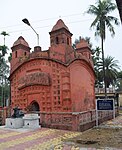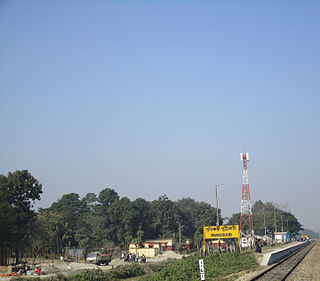Population
According to the 2011 Census of India, the Cooch Behar II CD block had a total population of 343,901, of which 289,917 were rural and 53,984 were urban. There were 179,591 (52%) males and 164,310 (48%) females. There were 38,828 persons in the age range of 0 to 6 years. The Scheduled Castes numbered 154,656 (44.97%) and the Scheduled Tribes numbered 3,429 (1.00%). [6]
According to the 2001 census, Cooch Behar II block had a total population of 298,163, out of which 154,011 were males and 144,152 were females. Cooch Behar II block registered a population growth of 16.06 per cent during the 1991-2001 decade. [7]
Census towns in the Cooch Behar II CD block are (2011 census figures in brackets. Baneswar (4,841), Khagrabari (23,122), Baisguri (5,021), Chakchaka (8,582) and Takagachh (12,414) . [6]
Large villages (with 4,000+ population) in the Cooch Behar II CD block are (2011 census figures in brackets): Basdaha Natibari (4,385), Sajherpar Ghoramara (5,844), Khagribari (6,226), Singimari Paschimpar (4,545), Chhat Singimari (4,432), Sakunibala (5,751), Kalarayerkuthi (20,739), Bararangras (8,049), Gopalpur (18,297), Marichbari (13,370), Kholta (14,110), Ambari (8,926), Kaljani (9,887), Kalapani (5,480), Kaminirghat (4,688), Mahishbathan Pratham Khanda (4,840), Sidheswari (4,467), Pestharjhar (5,536) and Khapaidanga (9,839). [6]
Other villages in the Cooch Behar II CD block include (2011 census figures in brackets): Haripur (995), Baikunthapur (1,053). [6]


















